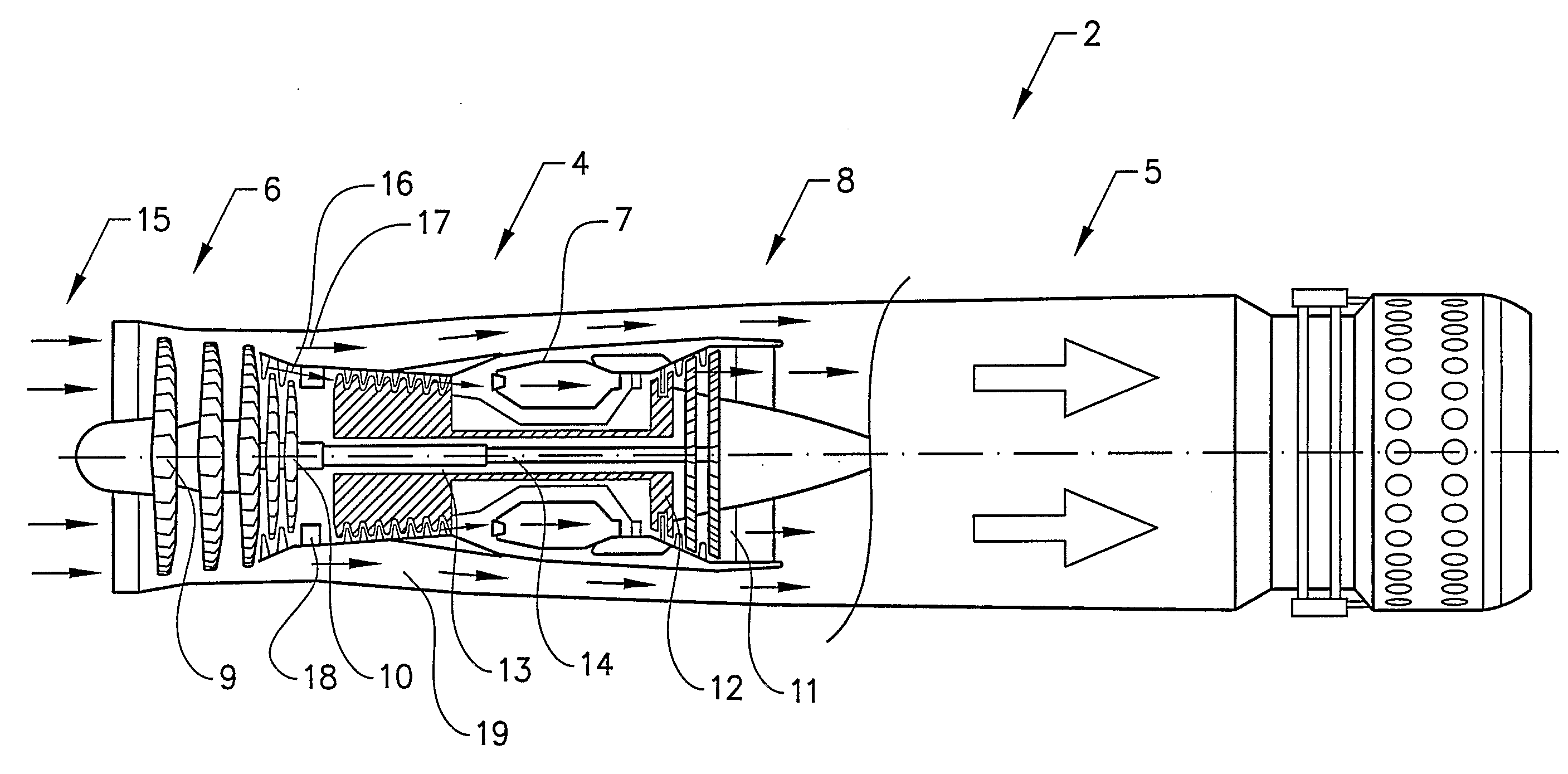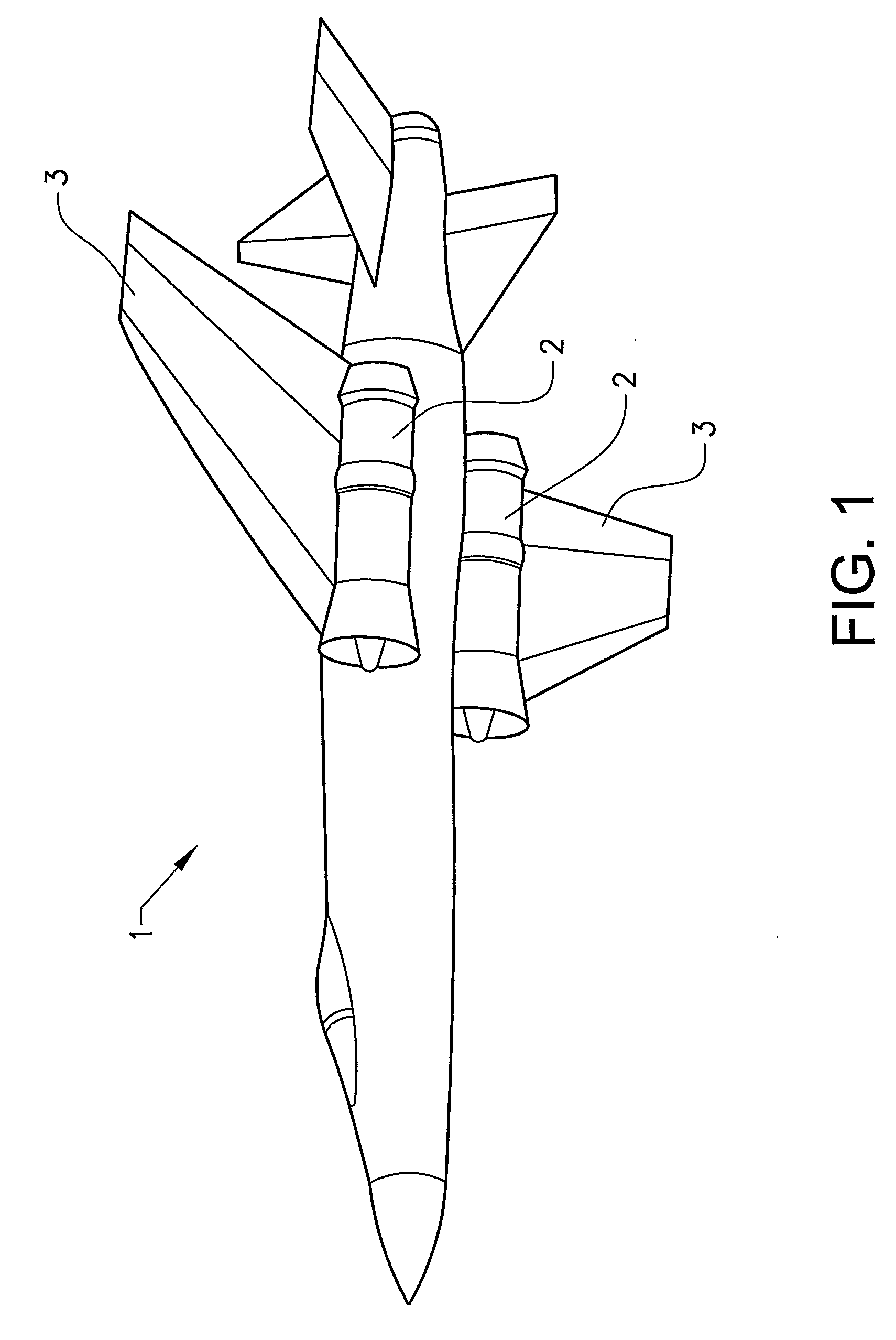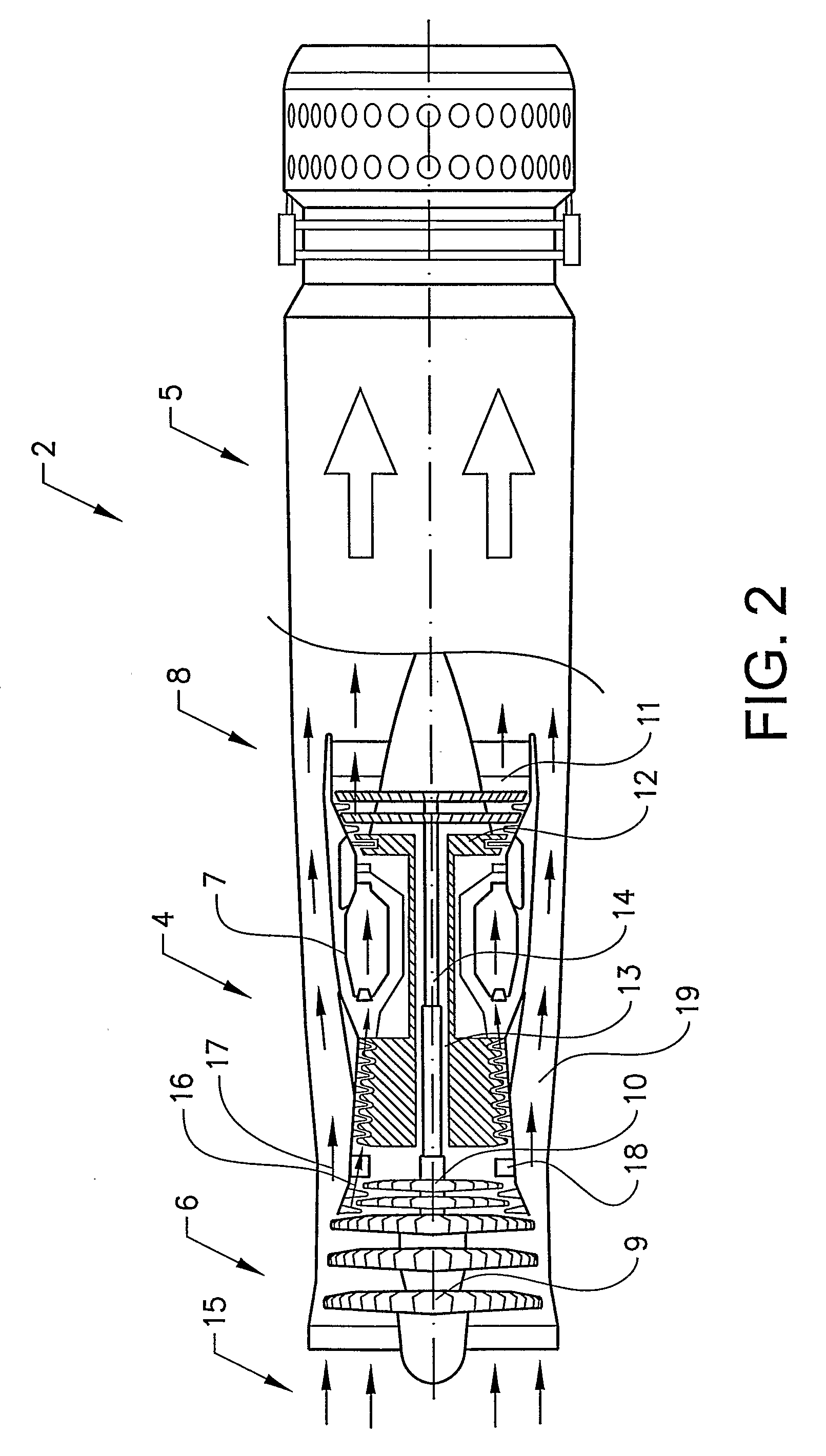Cooling System for an Aircraft, Aircraft Comprising the Cooling System and Cooling Method
a cooling system and aircraft technology, applied in the direction of machines/engines, fuselages, transportation and packaging, etc., can solve the problems of limited cooling capacity of fuel, increased costs, and reduced cooling capacity of fuel available for signature reduction, so as to increase the total resistance of aircraft, increase the effect of gas radiation, and increase the temperature of exhaust gas
- Summary
- Abstract
- Description
- Claims
- Application Information
AI Technical Summary
Benefits of technology
Problems solved by technology
Method used
Image
Examples
Embodiment Construction
[0020]FIG. 1 shows an aircraft 1 in a perspective view from below. A jet engine 2 is mounted under each wing 3.
[0021]FIG. 2 shows one of the jet engines 2 in a cross-sectional view. The jet engine 2 comprises two main parts, a gas generator 4 and an afterburner 5. The gas generator 4 is of the double-flow type and has twin rotors.
[0022]The jet engine comprises a compressor section 6 for compression of the incoming air, a combustion chamber 7 for combustion of the compressed air and a turbine section 8 arranged after the combustion chamber, which turbine section is connected to the compressor section in such a way that it can rotate in order to drive this by means of the energy-rich gases from the combustion chamber. The compressor section 6 comprises a low-pressure part 9, or fan, and a high-pressure part 10. The turbine section 8 comprises a low-pressure part 11 and a high-pressure part 12. The high-pressure compressor 10 is attached to the high-pressure turbine 12 via a first shaf...
PUM
 Login to View More
Login to View More Abstract
Description
Claims
Application Information
 Login to View More
Login to View More - R&D
- Intellectual Property
- Life Sciences
- Materials
- Tech Scout
- Unparalleled Data Quality
- Higher Quality Content
- 60% Fewer Hallucinations
Browse by: Latest US Patents, China's latest patents, Technical Efficacy Thesaurus, Application Domain, Technology Topic, Popular Technical Reports.
© 2025 PatSnap. All rights reserved.Legal|Privacy policy|Modern Slavery Act Transparency Statement|Sitemap|About US| Contact US: help@patsnap.com



